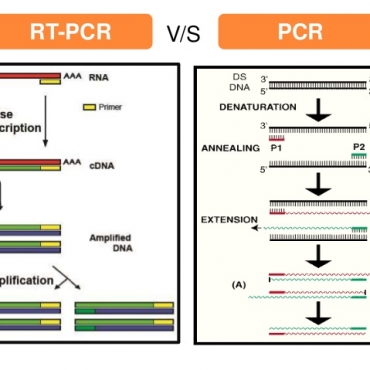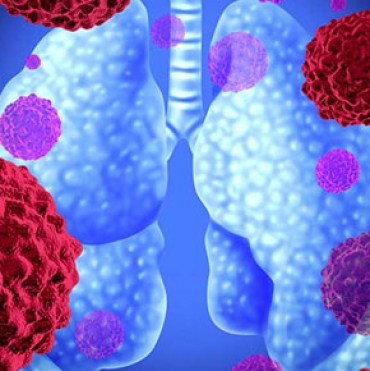Contact Admission
PCR test in medical diagnosis
Up to now, with infectious diseases, the medical profession still applies the Koch's proposition that must indicate pathogenic microorganisms. PCR is a "identifiable" test at the level of molecular genes that is of great value to help diagnose many difficult diseases in the past.
What is PCR? History invented it?
PCR (Polymerase Chain Reaction) is a technique to detect the DNA (or RNA) of a pathogen present in a patient's polymerase chain reaction that amplifies a million times in a short time. Thanks to PCR, from a very small sample of DNA (RNA), such as from a drop of blood, a hair or just a cell ... the laboratory can multiply and magnify millions of copies for the process of investigating, next.
PCR was invented by Kary Mullis, Cetus Biological Company, Emeryville, California, USA, in 1983. On Scientific American, Mullis said about his technique: "Starting with a genetic DNA molecule, PCR has "You can make 100 billion identical molecules in one afternoon. The reaction is easy. It doesn't need more than one test tube, a few simple reagents and a heat source." And for this important invention, Kary Mullis shared the Chemistry Prize with Michael Smith in 1993.
How does PCR work?
The principle of PCR works is to use polymerase polymerase enzyme to quickly make large numbers of copies from a selected segment of DNA (RNA).
PCR implementation process through three main steps: denaturation; combined; and extend (extension), repeat 30-40 cycles. The cycle is performed on an automatic camera, a device that rapidly heats and cools the test tubes containing the reaction mixture.
* Denaturation was performed at 94 ° C, helping double stranded DNA to split into two single strands of DNA.
* The annealing was performed at 54 ° C, primers combined with a single chain "sample", enzyme polymerase attached and replication began.
* Extension (extension) performed at 72 ° C, polymerase synthesizes complementary DNA chains to the sample paired with the primer, creating a double stranded DNA molecule.
The cycles are repeated many times, more copies are created, and the number of copies of the pattern increases exponentially.
In particular, for RNA viruses, such as HIV, measles, mumps, ZIKA ..., the laboratory will use reverse trancriptase (RT) enzyme to convert the viral RNA into DNA and then PCR, this test calls is RT-PCR (Reverse Transcriptase-Polymerase Chain Reaction). This technique has two phases:
* Synthesize complementary DNA from RNA using reverse transcriptase (RT) enzyme,
* Amplify this additional DNA using orthodox PCR.
PCR applications
PCR technique allows humans to multiply millions of DNA fragments (RNA) in a very short time. Therefore, at present, PCR has become an essential tool for biologists, forensic laboratories, genetics ... to use in diagnosing genetic diseases, identifying bacteria and viruses, taking DNA fingerprints, Researching human evolution, replicating the DNA of a mummy, determining a blood or biological relationship, etc.
Particularly in the medical field, PCR helps diagnose a number of specific and molecular genetic diseases that can not be done by traditional testing methods, specifically PCR and RT-PCR molecular biology tests help accurately diagnose diseases such as:
* Detecting pathogens that cannot be cultivated routinely such as viruses (hepatitis B, hepatitis C, dengue, HIV, Herpes, CMV, EBV, HPV, SARS virus, H5N1 ...), bacteria ( Chlamydia, Legionella, Mycoplasma, Treponema pallidum ...).
* Detects sex transmitted diseases STDs (Chlamydia, Legionella, Mycoplasma, Treponema pallidum ...).
* Detection of culturing agents failed because they were less likely to be present in the specimen, had a very slow growth rate, or had been previously treated with antibiotics (tuberculosis culture failure, endocarditis meningitis ...).
* Quick detection of dengue virus strains of dengue fever.
* Detects the germ of cancer (HPV in cervical cancer, APC gene in colon cancer, BRCA1, BRCA2 gene in breast cancer, TPMT gene in pediatric leukemia, Rb-105 gene in reticuloblastoma, NF-1,2 gene in neural fibroids, IgH and TCRy genes in non-Hodgkin lymphoma ...)
* Research on human leukemia antigen (HLA, human lymphocyte antigen) ...
* Detecting strains of resistant bacteria such as S.aureus MRSA, bacteria producing ESBL betalactamase, or carbapenemase ...)
* Determination of the toxin of microorganisms: Subunit A of the non-heat resistant enterotoxin of Escherichia coli.
* In biotechnology, PCR molecular biology assay is used in gene mapping, gene discovery, gene flow, DNA sequencing ...
Advantages and disadvantages of PCR
Advantages
The PCR test has many advantages over other conventional tests such as: (1) Fast test results, not more than 5 hours from the start of the test; (2) Very high specificity; (3) Detects multiple pathogens of microorganisms that cannot be detected by traditional biochemistry, biology, or immunology laboratory (4) Provides copies virus quantitative results, assists physicians to evaluate stage, effectiveness of treatment, and prognosis of the disease; (5) Detect genetic mutations that cause cancer, and other genetic diseases ... to take measures to prevent disease.
Defect
Disadvantages of current PCR testing: (1) Must have a modern, standardized laboratory. In addition to modern laboratories, PCR also requires highly qualified technicians and doctors. (2) The cost of PCR testing is still quite high; and (3) In some cases, such as antibiotic use, incorrect collection or storage of specimens can inhibit PCR, resulting in a low sensitivity of the test.
Something to discuss
In medicine, the diagnosis to determine the root cause of the disease is the first and most important step. In particular, in infectious diseases, until now, the medical profession still applies the Koch (Koch's postulates) proposition launched in 1884 "The gold standard to diagnose infection is to indicate pathogenic microorganisms". In clinical practice, it is very difficult to achieve this Koch principle because: (1) the amount of microorganisms is too small or difficult to isolate, (2) the microorganism multiply too slowly, not enough time for the special treatment. brand; (3) many factors influence patient collection.
In theory, PCR is a test "identify" (identify) at the molecular level, the modern genetic genome, so it has a very high specificity, almost absolutely responds to "Koch's postulate" to determine diagnosis. With the enzyme polymerase, a very small sample of DNA (RNA), the lab can easily multiply thousands, million times in a very short time (about 5 hours), making the identification of the pathogen too easy, convenient and more timely treatment. Therefore, PCR is now widely used in medicine to confirm the diagnosis.
Despite its many advantages, PCR, like other diagnostic tests, still has the "fatal" disadvantage of the low sensitivity (sensitivity, Se) of some patients, meaning "false negative". still high. PCR is typical in tuberculous meningitis, a disease that requires early diagnosis and treatment to have a good prognosis and few complications. Although the TB PCR for CSF had an almost absolute 98% high Sp specificity, the Se sensitivity was very low 56%. Therefore, clinicians often have to: (1) Do additional TB PCR on other samples, such as blood, urine, sputum, pleural fluid, peritoneum; and (2) Do other tests such as IDR, sputum scan, lung scan ...
Dr. Tran Ba Thoai,
Member of the Executive Committee of Vietnam Endocrinology Association
REFERENCES [1] PCR (Polymerase Chain Reaction) [2] PCR in diagnosis of infection: Detection of bacteria in cerebrospinal fluids [3] How does the PCR work ? [4] Polymerase Chain Reaction (PCR) [5] Basic Principles of RT-qPCR [6] Reverse transcriptase polymerase chain reaction (RT-PCR) [7] RT PCR (Reverse transcription PCR) [8] Diagnostic accuracy of nucleic acid amplification tests for tuberculous meningitis: a systematic review and meta-analysis [9] Nucleic acid amplification tests in the diagnosis of tuberculous pleuritis: a systematic review and meta-analysis [10] Diagnosed tuberculous meningitis using cerebrospinal fluid polymerase chain reaction in patients hospitalized with the diagnosis of meningitis in referral hospitals in Isfahan
Other research
- Y học dựa vào bằng chứng | Evidence-based medicine | TS.BS.Vũ Duy Kiên ( 08:09 - 02/01/2024 )
- PHAN ASIA UNIVERSITY OPEN EXPENSES RESEARCH COOPERATION WITH PASTEUR LILLE INSTITUTE- FRANCE ( 08:51 - 05/03/2020 )
- USTIN, Texas - Researchers from the University of Texas at Austin and the National Institutes of Health made a major breakthrough to the development of new coronavirus vaccines in 2019 by creating a scale map First 3D atom of a tuber part ( 11:18 - 22/02/2020 )
- Importation and Human-to-Human Transmission of a Novel Coronavirus in Vietnam ( 14:57 - 31/01/2020 )
- Announcement: Organizing Clinical Microbiology course ( 07:53 - 09/04/2019 )
- AI is so powerful that it can predict the moment of human death ( 08:42 - 01/04/2019 )
- World umbilical cord in Vietnamese hands ( 15:19 - 30/03/2019 )
- Stem cell magic ( 15:14 - 30/03/2019 )
- A new breakthrough in stem cell research ( 09:20 - 30/03/2019 )
- Treatment of psoriasis ( 09:38 - 23/03/2018 )








